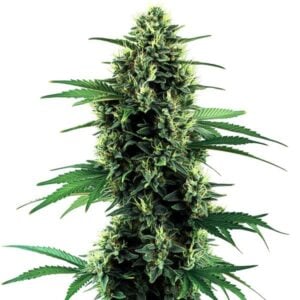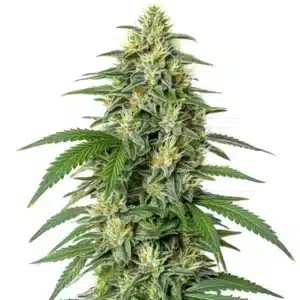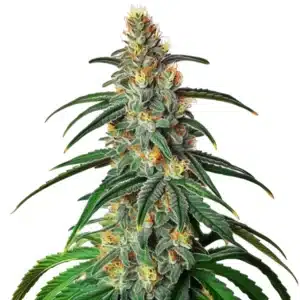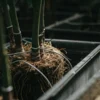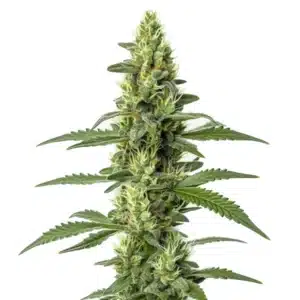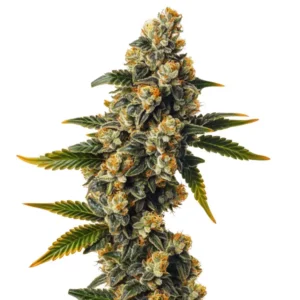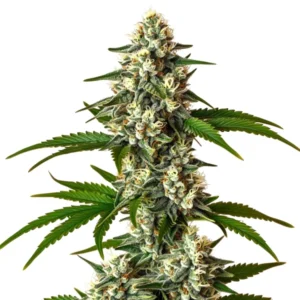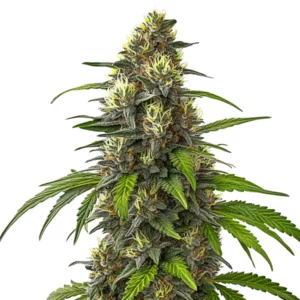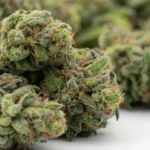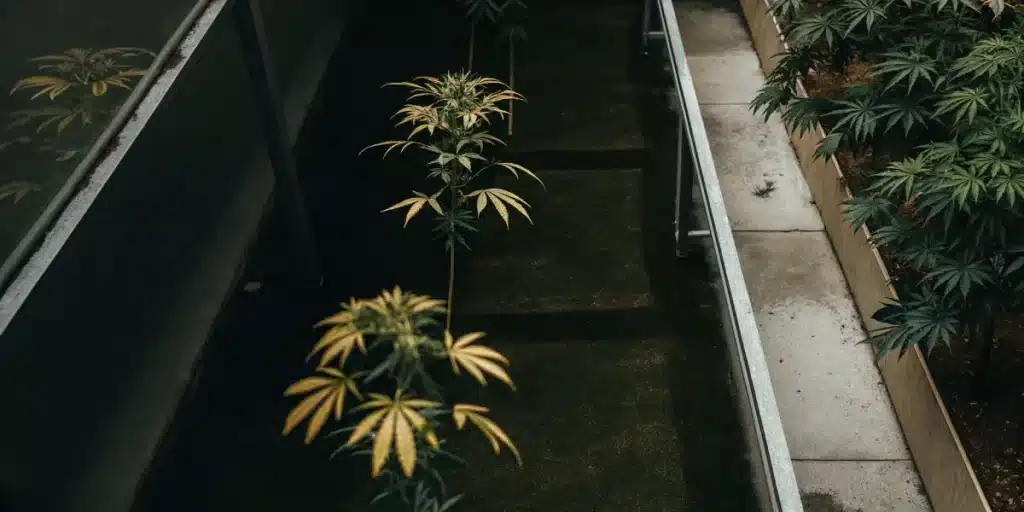
Yellow Leaves and Poor Transpiration in Marijuana
Encountering yellow leaves and poor transpiration in marijuana plants can be a headache. This issue often stems from nutrient deficiencies, watering problems, or inadequate drainage. By knowing these factors, growers can maintain healthy cannabis plants and ensure optimal growth.
Yellow leaves in marijuana might signal nutrient deficiency. When leaves turn yellow, it’s often due to a lack of essential nutrients like nitrogen, potassium, or magnesium. These nutrients are vital for photosynthesis and overall plant health. Ensuring a balanced nutrient supply can prevent yellowing and maintain vibrant foliage.
Recommended Strains
Critical Purple Auto
|
|
THC | 20% - 24% (Medium) |
|
|
Type | Autoflowering |
|
|
Yield | Low |
|
|
Phenotype | 80% Indica / 20% Sativa |
Northern Lights Autoflower
|
|
THC | 10% - 14% (Low) |
|
|
Type | Autoflowering |
|
|
Yield | Medium |
|
|
Phenotype | 80% Indica / 20% Sativa |
Poor transpiration in cannabis plants can further complicate the situation. Transpiration involves water movement through plants, aiding in nutrient uptake and temperature regulation. When transpiration is hindered, it can lead to wilting, stunted growth, and yellow leaves. Identifying and addressing the root cause can remedy these issues effectively.
Besides to nutrient and water issues, pests and diseases can also cause yellow leaves and poor transpiration in marijuana. Insects like spider mites or fungal infections can damage plant tissues, impairing their ability to absorb water and nutrients. Regular inspection and pest management practices can help prevent these problems and keep plants healthy.
Furthermore, the soil’s pH level can influence nutrient availability. If the pH is too high or too low, it can lock out essential nutrients, leading to yellow leaves marijuana nutrient deficiency. Adjusting the pH to the appropriate range (typically between 6.0 and 7.0) can enhance nutrient uptake and overall plant vitality.
Identifying Nutrient Deficiencies
Yellow leaves marijuana nutrient deficiency is a common challenge. Nitrogen deficiency, for example, causes lower leaves to yellow and die off. Similarly, a potassium deficiency may result in yellowing edges and brown spots. Magnesium shortage, on the other hand, often appears as interveinal chlorosis, leaving the veins green while the leaf tissue turns yellow.
To combat these deficiencies, regular monitoring and testing of soil or growing medium are crucial. Kits are available to test for nutrient levels, allowing growers to adjust their feeding schedules accordingly. Using high-quality fertilizers tailored for marijuana can also make a significant difference.
Visual signs and leaf symptoms are not the only ways to identify nutrient deficiencies. Leaf tissue analysis can provide an accurate picture of nutrient levels within the plant. This method allows growers to tailor their feeding regimen to address specific deficiencies effectively, ensuring the plants receive the right nutrients at the right time.
Another approach to identifying deficiencies is to observe the growth patterns of the plant. Stunted growth, poor bud development, and low yields are indicators that the plant’s nutritional needs are not being met. By recognizing these signs early, growers can take corrective action to improve plant health and productivity.
Practical Solutions for Nutrient Deficiencies
Adjusting nutrient levels is a straightforward process. Yellow leaves and poor transpiration in marijuana are often signs of nutrient imbalances, especially nitrogen deficiencies. If yellow leaves indicate a nitrogen shortage, increase nitrogen-rich fertilizers gradually. Potassium and magnesium deficiencies can be addressed similarly with specific supplements. Consistent feeding routines prevent sudden nutrient drops, maintaining a balanced growth environment and healthy plant metabolism.
Consider the cannabis strain as well. Different strains have unique nutritional needs. For instance, Original Auto Northern Lights is known for its resilience but still requires a balanced diet for optimal health.
Incorporating organic amendments like bone meal or kelp into the soil can provide a slow-release of essential nutrients, reducing the risk of yellow leaves marijuana nutrient deficiency. These natural sources improve soil quality and ensure a steady supply of nutrients, leading to healthier, more robust plants.
For hydroponic growers, maintaining the correct nutrient solution concentration is crucial. Regularly checking and adjusting the nutrient levels in the water can prevent deficiencies and promote vigorous growth. Automated systems that monitor and dispense nutrients can simplify this process and reduce the likelihood of errors.
Promos & Deals
Improving Transpiration
Poor transpiration cannabis plant care involves knowing environmental factors. Excessive humidity or inadequate airflow can reduce transpiration rates. High humidity levels create a saturated environment, preventing the plant from releasing moisture. This scenario can lead to yellow leaves and stagnated growth.
To address poor transpiration, ensure proper ventilation. Use fans to maintain air circulation, reducing humidity and promoting water movement through the plant. Additionally, adjusting temperature settings can help balance transpiration rates.
Besides to fans, dehumidifiers can be used to control excessive moisture levels, particularly in indoor growing environments. By keeping humidity within the recommended range, growers can enhance transpiration and prevent associated issues like mold and mildew, which can further damage the plant.
The positioning of plants can also affect transpiration. Ensuring adequate spacing between plants allows for better airflow and light penetration, which aids in regulating humidity and temperature. This setup helps in fixing transpiration problems in marijuana, promoting healthy growth.

Environmental Adjustments for Better Transpiration
Creating an optimal environment is key. Keep humidity levels between 40-60% during the vegetative stage and lower during flowering. This range encourages healthy transpiration without overwhelming the plant. Temperature should stay between 68-77°F, mimicking natural outdoor conditions.
For strains like Critical Purple Auto, which thrive in specific climates, adjusting environmental conditions is crucial. This strain can benefit from controlled indoor setups where humidity and temperature can be precisely managed.
Lighting also plays a role in transpiration. Ensuring that plants receive adequate but not excessive light can prevent stress and overheating, which can hinder transpiration. Using adjustable lights allows growers to fine-tune the intensity and duration, supporting optimal plant health.
Implementing a consistent light schedule can further assist in regulating transpiration. Mimicking natural daylight hours helps synchronize the plant’s physiological processes, promoting balanced water and nutrient uptake and minimizing the risk of yellow leaves and poor transpiration.
Watering Practices and Drainage
Marijuana yellow leaves watering issues can arise from over-watering or under-watering. Both lead to stressed plants and poor transpiration. Over-watering saturates the soil, leading to root rot and yellow leaves. Conversely, under-watering deprives the plant of necessary moisture, causing wilting and yellowing.
Proper watering techniques are essential. Allow the top inch of soil to dry out before watering again. This practice prevents waterlogging and promotes healthy root systems. Additionally, ensure pots have adequate drainage to avoid water buildup, which can lead to cannabis leaf discoloration and drainage problems.
Monitoring the weight of pots can be a practical way to determine when to water. Lighter pots indicate that the soil has dried sufficiently, signaling the need for watering. This method helps prevent over-watering and supports consistent soil moisture levels, which are crucial for healthy plant development.
Implementing a drip irrigation system can offer precise control over watering. By delivering water directly to the root zone, these systems reduce waste and ensure that plants receive the right amount of moisture. This approach can significantly improve plant health and minimize marijuana yellow leaves watering issues.
Effective Watering Strategies
Watering should be consistent but not excessive. For example, a strain like Gelato Feminized may require different watering schedules compared to others due to its unique growth patterns. Observing plant responses can guide watering frequency adjustments.
Use pots with multiple drainage holes and consider adding perlite to the soil mix. Perlite improves soil aeration and drainage, preventing water accumulation. This setup supports healthy root growth and reduces the risk of yellow leaves.
Incorporating mulch on the soil surface can help retain moisture and regulate soil temperature. Mulch acts as a barrier against evaporation, ensuring that the plant’s roots have consistent access to water. This practice can enhance overall plant vigor and reduce the likelihood of yellow leaves and poor transpiration.
Timing is crucial in watering practices. Watering in the early morning or late afternoon reduces evaporation rates, allowing more water to reach the roots. This timing also helps avoid fungal infections and other moisture-related issues that can arise from watering during the heat of the day.
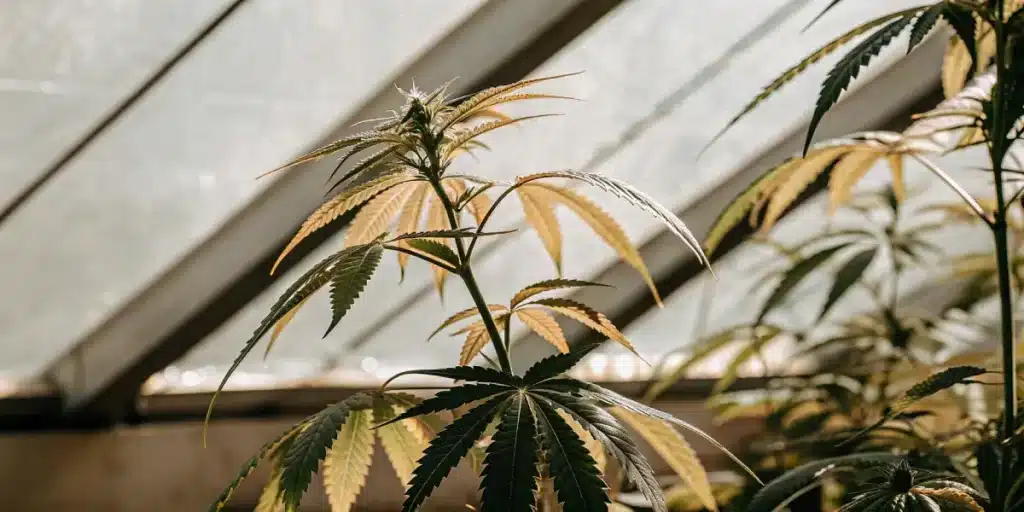
FAQs About Yellow Leaves and Poor Transpiration in Marijuana
What causes yellow leaves in marijuana plants?
Yellow leaves in marijuana plants often result from nutrient deficiencies, particularly nitrogen, potassium, and magnesium. These nutrients are crucial for various plant processes, including photosynthesis, which keeps leaves green and healthy. A lack of these nutrients can lead to cannabis leaf discoloration and other growth issues.
Environmental factors can also contribute to yellowing. Improper lighting, temperature extremes, and poor air circulation can stress the plant, leading to yellow leaves. Regular monitoring and maintaining optimal growing conditions can prevent these problems.
Yellow leaves and poor transpiration in marijuana can also result from pH imbalances in the growing medium. A pH level that is too high or too low can prevent nutrient uptake, causing deficiencies and leaf discoloration. Regularly checking and adjusting the pH can help maintain plant health.
Additionally, pest infestations can lead to yellow leaves and poor plant health. Insects that feed on plant sap can deplete vital nutrients, causing yellowing and reduced growth. Implementing integrated pest management strategies can effectively manage pests and protect plant vitality.
How can I improve transpiration in my cannabis plants?
Improving transpiration involves managing environmental conditions. Ensure proper air circulation with fans, which helps regulate humidity and temperature. This setup promotes healthy water movement through the plant, essential for nutrient uptake and growth.
Additionally, maintaining appropriate humidity levels is vital. Keeping humidity between 40-60% during vegetative stages encourages optimal transpiration. Adjustments during flowering can further enhance plant health, reducing the risk of poor transpiration cannabis plant care issues.
Incorporating silica supplements into your feeding regimen can strengthen plant cell walls, enhancing their ability to transport water and nutrients. This addition can improve overall plant resilience and support efficient transpiration, particularly in less-than-ideal growing conditions.
Regularly pruning and defoliating plants can also enhance transpiration by reducing excess foliage, which can trap moisture and inhibit airflow. By trimming lower leaves and crowded areas, growers can improve air circulation and light penetration, fostering a healthier growing environment.
Are yellow leaves always a sign of nutrient deficiency?
While yellow leaves often indicate nutrient deficiencies, they can also result from other factors. Over-watering, poor drainage, and environmental stressors can lead to yellowing. It’s essential to assess all potential causes to accurately diagnose the issue.
Testing soil nutrients and observing plant conditions can help identify the root cause. Addressing the correct problem, whether it’s a nutrient shortage or environmental factor, ensures effective solutions and healthier plants.
Another factor to consider is the natural aging process of the plant. As cannabis plants mature, older leaves may naturally yellow and fall off as energy is redirected to new growth and bud development. In such cases, this is a normal part of the plant’s life cycle.
It’s also important to consider genetic factors. Some cannabis strains may exhibit a natural tendency to develop yellow leaves under certain conditions. Knowing the specific characteristics of the strain being grown can help differentiate between normal coloration changes and problematic symptoms.
How does poor drainage affect marijuana plants?
Poor drainage can lead to waterlogged soil, resulting in root rot. This condition prevents roots from absorbing oxygen, causing yellow leaves and stunted growth. Ensuring proper drainage allows excess water to escape, keeping roots healthy.
Incorporating materials like perlite into the soil mix can improve aeration and drainage. Using pots with adequate drainage holes also helps prevent water accumulation, reducing the risk of cannabis leaf discoloration and drainage issues.
Clay pebbles or gravel at the bottom of pots can further enhance drainage by creating a space for excess water to collect away from the roots. This layer prevents root suffocation and promotes a healthier root environment, reducing the risk of marijuana yellow leaves watering issues.
Avoid compacting the soil too tightly, as it can restrict water flow and root expansion. Looser soil structures facilitate better drainage and aeration, supporting robust root systems and overall plant health. Regularly checking the soil condition and adjusting as needed can prevent potential problems.
What are the signs of over-watering in marijuana plants?
Over-watering can cause wilting, yellow leaves, and a damp, musty smell from the soil. These symptoms indicate that the roots are suffocating due to excess moisture, leading to poor plant health. Adjusting watering frequency is crucial to resolve this problem.
Allowing the soil to dry between waterings and ensuring proper drainage can fix transpiration problems in marijuana. Monitoring plant responses and maintaining a balanced watering schedule fosters a healthier growing environment.
Over-watering can also result in fungal growth, such as powdery mildew or mold, which can spread rapidly and cause extensive damage to the plant. These conditions thrive in wet environments, making it essential to address over-watering issues promptly to protect plant health.
Implementing a moisture meter can aid in accurately determining soil moisture levels. This tool provides precise measurements, helping growers avoid both over-watering and under-watering, ultimately supporting healthier plant development and preventing yellow leaves and poor transpiration.



